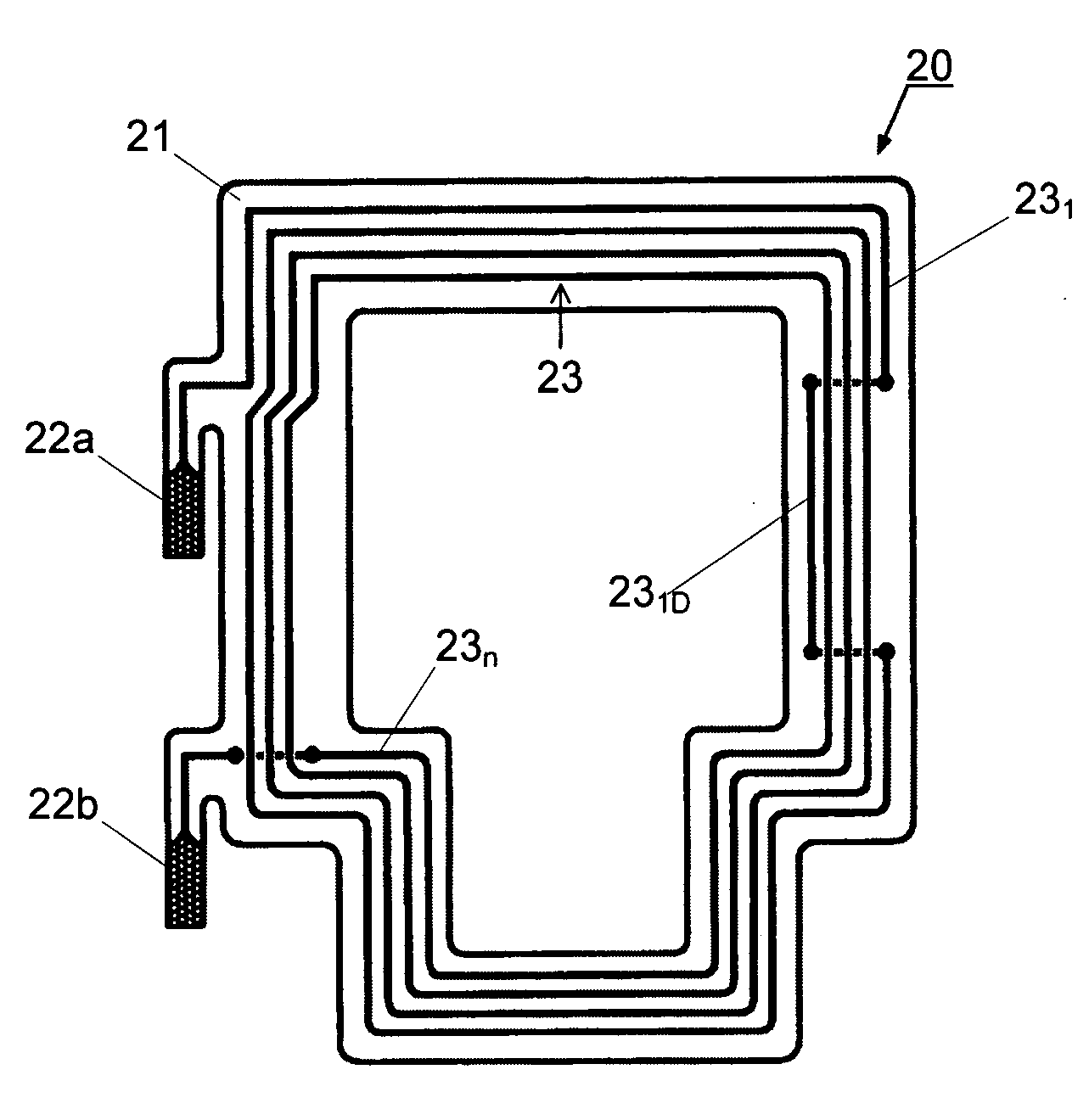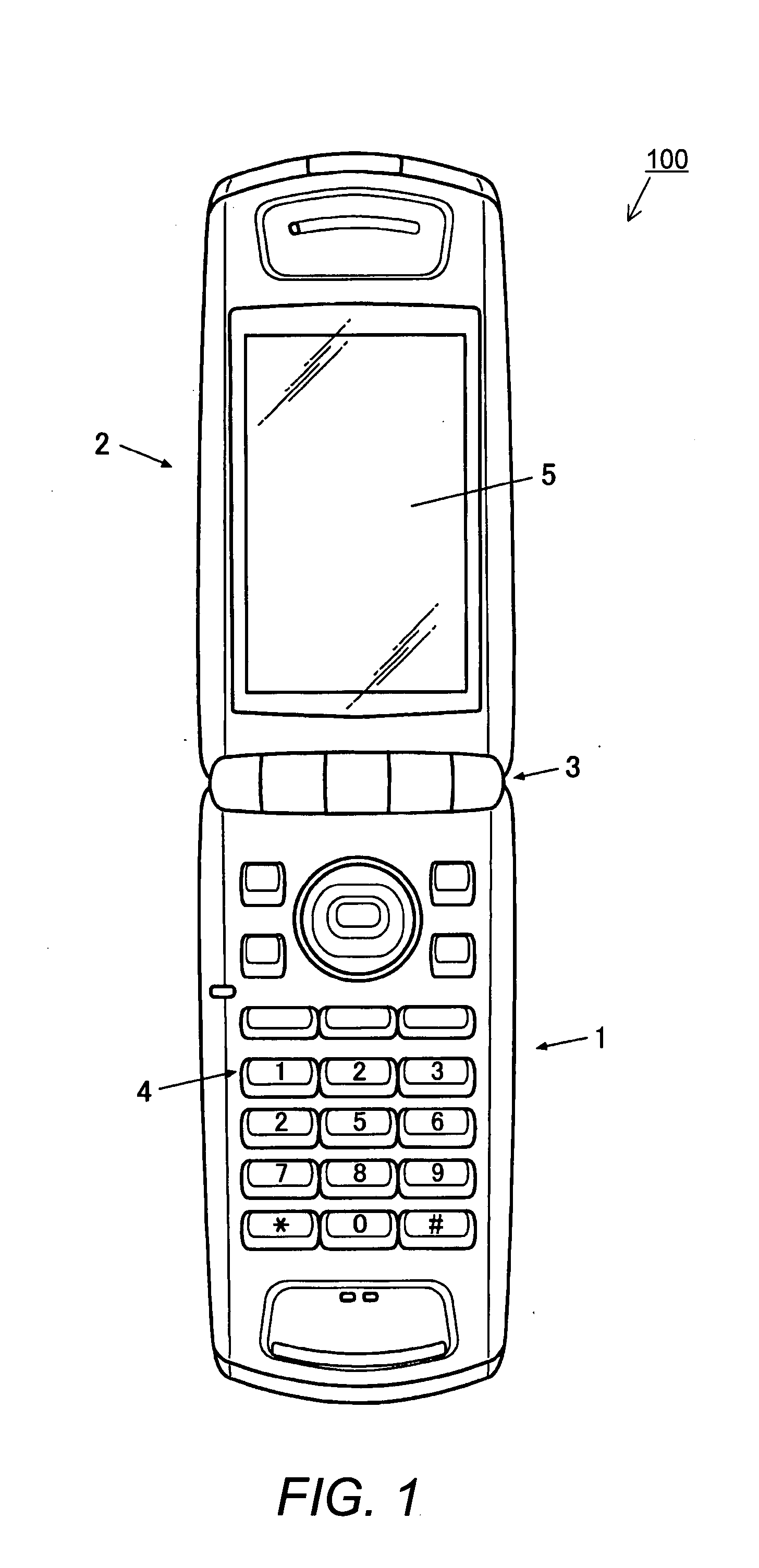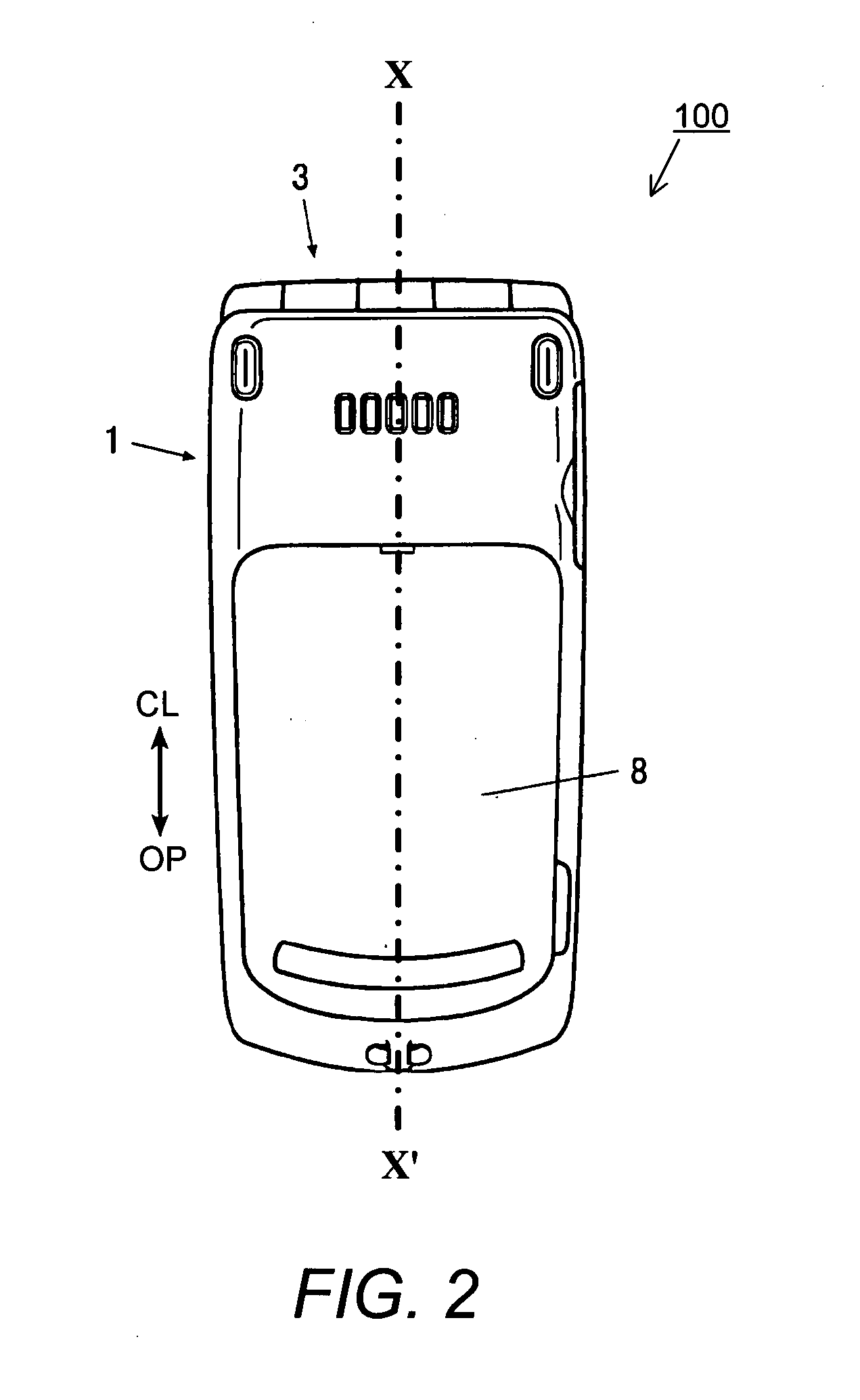Antenna and portable electronic device
- Summary
- Abstract
- Description
- Claims
- Application Information
AI Technical Summary
Benefits of technology
Problems solved by technology
Method used
Image
Examples
first embodiment
[0081] The RFID antenna 20 according to the first embodiment of the present invention will be explained referring to FIGS. 6A and 6B. FIG. 6A is a plan view showing the configuration of the RFID antenna 20 according to the first embodiment, and FIG. 6B is a perspective view showing a conductive coil 23 of the RFID antenna 20 shown in FIG. 6A.
[0082] The RFID antenna 20 according to the first embodiment includes a base film 21, the antenna terminals 22a, 22b and the conductive coil 23, as shown in FIG. 6A.
[0083] The base film 21 is formed by a flexible board with its shape matching with the shape and size of the battery lid 8. As shown in FIG. 6A, the base film 21 has a center portion open, and a conductive pattern formed in a spiral form on one side thereof, thereby forming a loop antenna. That is, the size of the opening of the base film 21 is based on the size of the loop diameter that is required of the RFID antenna 20.
[0084] The conductive coil 23 is formed by a planar coil wh...
second embodiment
[0096] Although the curved portion 231D that compensates for the magnetic field strength at the center portion of the RFID antenna 20 is formed by bending the outermost coil turn 231 of the conductive coil 23 of the RFID antenna 20 in the first embodiment, a portion other than the outermost coil turn 231 may be bent.
[0097] The RFID antenna 20 and the conductive coil 23 in this case are shown in FIGS. 8A and 8B. As shown in those diagrams, the conductive coil 23 formed at the RFID antenna 20 according to the second embodiment has an antenna pattern provided by bending a part of a second coil turn 232 (e.g., linear portion) which is inward of the outermost coil turn 231 by one turn to form a curved portion 232D which is placed inward of the innermost coil turn 23n.
[0098] While the RFID antenna 20 of the first embodiment which has the outermost coil turn 231 bent can make the magnetic field strength at the center portion of the loop antenna higher than that of the conventional RFID a...
third embodiment
[0105] The first and second embodiments employ the configurations where the magnetic field strength at the center portion of the antenna is compensated for by bending a part of the conductive coil 23. Alternatively, a part of the conductive coil 23 (e.g., linear portion) may be branched to form a conductive pattern which compensates for the magnetic field strength at the center portion of the antenna.
[0106] An example of the configuration of the third embodiment where the outermost coil turn 231 of the conductive coil 23 is branched will be described referring to FIGS. 10A and 10B. FIG. 10A is a plan view showing the RFID antenna 20 according to the third embodiment, and FIG. 10B is a perspective view showing the conductive coil 23 according to this embodiment.
[0107] As shown in FIGS. 10A and 10B, the feature of the conductive coil 23 according to the third embodiment lies in that the conductive coil 23 has an antenna pattern having a bypass portion 231S formed by branching the co...
PUM
 Login to View More
Login to View More Abstract
Description
Claims
Application Information
 Login to View More
Login to View More - R&D
- Intellectual Property
- Life Sciences
- Materials
- Tech Scout
- Unparalleled Data Quality
- Higher Quality Content
- 60% Fewer Hallucinations
Browse by: Latest US Patents, China's latest patents, Technical Efficacy Thesaurus, Application Domain, Technology Topic, Popular Technical Reports.
© 2025 PatSnap. All rights reserved.Legal|Privacy policy|Modern Slavery Act Transparency Statement|Sitemap|About US| Contact US: help@patsnap.com



